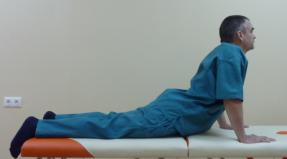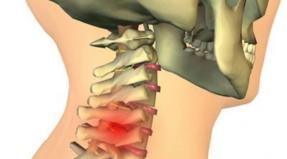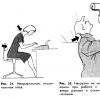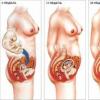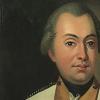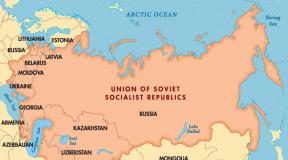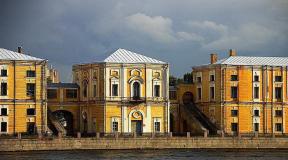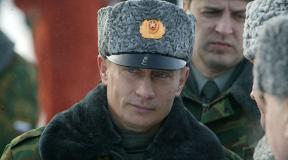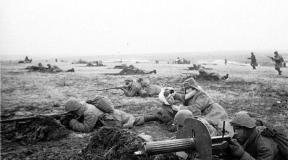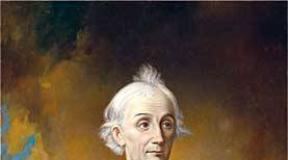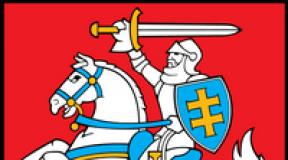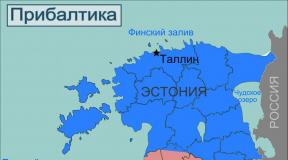The period from 1991 to. Russian Federation. What have we learned
The state of railway transport in the post-Soviet period
since 1991 Until now
After the collapse of the Soviet Union, 17 railways remained in Russia with a total length of the network of 87.6 thousand km. At the same time, the technical base of railway transport was substantially eliminated. The only plant that produced electric trains for suburban traffic (the Riga plant) ended up in another state. The plant in Rustavi, which produced electric locomotives of the VL series, separated from Russia along with Georgia. So many factories and production facilities that worked for railway transport ended up outside of Russia. In addition, the railway transport of the Soviet Union received electric passenger locomotives from Czechoslovakia, freight cars from Poland, passenger cars from the GDR, shunting locomotives and diesel trains for suburban transport from Hungary, track machines and crane equipment from Bulgaria. All this stopped as a result of the collapse of the USSR and the subsequent collapse of the alliance of Eastern European states. After 1991, for ten years, railway transport received practically nothing and worked only on the equipment that existed at that time.
Since 1992, the railway network in Russia has decreased by 1.5 thousand km and by 2000 its length amounted to 86 thousand km.
The turnover of the car in 1999 was equal to 9 days. The volume of traffic during this period fell sharply (2.5 times), which led to a large excess of fixed assets (structures and equipment). This has put a heavy burden on the railways. In 1998, the decline in the volume of traffic stopped, and there was a tendency for their growth. In 1999, as compared to 1998, the loading of goods increased by 13.5%, the turnover of goods - by 11.5%. This upward trend in transportation work continued until the onset of the 2008 economic crisis.
After 2000, the Ministry of Railways of the Russian Federation began to take steps to strengthen the material base of railway transport. The production of electric trains was mastered at the factories in Torzhok and Demikhovo. Diesel locomotives and electric locomotives of new designs are being tested. Work is underway to electrify and build new railway lines. However, this still cannot significantly affect the general condition of railway transport.
Rail transport is now experiencing great difficulties. Since 1992, the depreciation of fixed assets has grown from 36% to 75%. There was a shortage of rolling stock. Passenger transportation, including suburban transportation, has firmly become unprofitable.
The search for a way out of this situation led to a radical reform of railway transport.
In 1998, the Concept of the Structural Reform of the Federal Railway Transport was adopted and is currently being implemented. The government has identified the following objectives for structural reform:
increasing the stability of the operation of railway transport, its accessibility and safety, the quality of the services provided by it to ensure a single economic space of the country and national economic development;
reduction of the total national economic costs for the carriage of goods by rail; meeting the growing demand for freight and passenger transportation.
In 2003, production and economic functions were removed from the Ministry of Railways and, together with all the property of the railway transport, were transferred to the newly established open joint-stock company Russian Railways (JSC Russian Railways), all of whose shares are owned by the state. Railways became branches of Russian Railways. The transport services market now allows so-called independent carriers in the form of operator companies that own wagons, which accept cargo for transportation and pay Russian Railways a fee for using the railway infrastructure. They are removed from the framework of railway transport and transferred to other departments of the enterprise (factories, workshops, repair facilities, housing stock, etc.), which are not directly related to the transportation process. The social sphere (health care, education, houses of culture, sanatoriums, recreation centers, sports facilities, etc.) is significantly narrowing. Within the framework of JSC "Russian Railways", subsidiaries are being created, in which certain areas of activity of railway transport are concentrated. The first of them "Refservice" and "Transcontainer", later the first freight company.
In 2004, the Ministry of Railways was disbanded, and its state functions were transferred to the Ministry of Transport of the Russian Federation and the Federal Agency for Railway Transport.
The key task of JSC Russian Railways is to improve the efficiency of the transportation process and achieve high economic results. Among the measures taken to solve this problem, one of the leading places is given to the use of more advanced methods of operating railways, the introduction of computer management methods and information technologies.
In March 1990, the Lithuanian parliament made a decision to secede from the USSR. Moscow threatened to use force, but did so only in January 1991, which sharply undermined its authority. Following the example of Lithuania, other union and autonomous republics announced their secession from the USSR. The parade of sovereignties was supported by the chairman of the Supreme Soviet of the RSFSR Boris Nikolayevich Yeltsin, which sharply increased his authority. On June 12, 1990, the 1st Congress of People's Deputies adopted the Declaration on State Sovereignty of the Russian Federation. By this time, other union republics had already proclaimed their independence (Lithuania, Latvia, Estonia, etc.). Russia could not stay away from this process. Despite its political and economic significance for the country, Russia was the republic that the command-bureaucratic system had exhausted especially strongly.
It became clear to Gorbachev that it would not be possible to preserve the USSR by force. Then he began to prepare a new union treaty. The signing of a new union treaty was scheduled for August 20, 1991. But on August 19, conservatives from the union government (Yanaev, Pugo, Pavlov) removed Gorbachev from power and created the State Committee for a State of Emergency (GKChP). The State Emergency Committee spoke in favor of the termination of reforms and the complete restoration of the USSR. The Supreme Council of the RSFSR, headed by President B.N. Yeltsin. This speech was supported by the people. On August 21, the GKChP was arrested, the activities of the CPSU were banned, and Gorbachev's return to power. However, Gorbachev's authority was so weak that he already ruled a virtually nonexistent country.
Russia's transition to the market (October 1991) sharply exacerbated the confrontation between the center and the republics, the "war of laws" developed into a new stage. The rivalry between the allied and Russian leaders - Gorbachev and Yeltsin - also entered its highest phase. It was based on the struggle for power. In June 1991, B.N. Yeltsin. On June 12, 1991, he announced the independence of Russia.
The August 1991 putsch (GKChP) accelerated the collapse of the USSR. On December 8, 1991, in Belovezhskaya Pushcha near Brest, the leaders of Belarus (S. Shushkevich), Russia (B.N. Yeltsin), Ukraine (L. Kravchuk) signed an agreement on the creation of the Commonwealth of Independent States (CIS). Later, at a meeting in Alma-Ata, 8 more republics joined the Commonwealth. The USSR legally ceased to exist. On December 25, 1991, Gorbachev resigned from his duties as President of the USSR. All power passed to Yeltsin and the heads of the former republics. Russia has embarked on the path of independent existence.
Russia had to resolve issues state structure, socio-economic and spiritual revival. The state authorities and democratic forces did not have a concrete program of political transformations. Therefore, the basis of Russian statehood was the union of the new leadership and the old party and economic nomenclature.
Before the multinational The Russian state the task was to strengthen its integrity. All autonomous republics of Russia proclaimed themselves sovereign states. Some of them (Tatarstan, Bashkortostan, Yakutia) tried to take a course towards gradual secession from the Russian Federation. The local ruling elites sought to break free from subordination to the center. This could lead to the disintegration of the country and civil strife. A number of the peoples of the North Caucasus proclaimed sovereignty and made territorial claims against Russia. Under these conditions, the policy of the center was not consistent. The formations of D. Dudayev, which dispersed in September 1991 the Supreme Soviet of the Chechen-Ingush Autonomous Republic, were not disarmed.
In order to preserve the unity of Russia, in March 1992, most of the constituent entities of the Federation signed the Federal Treaty on the delimitation of powers between the federal authorities and the authorities of the constituent entities of the Federation.
The further formation of Russian statehood is associated with the development of its own Constitution. However, the parliamentary opposition headed by R.I. Khasbulatov in every possible way prevented this. The stumbling block was the choice of the form of statehood: a presidential or parliamentary republic. The confrontation between the executive and legislative branches of government was also due to a different vision of the strategy of economic reforms. All this led to the fact that the President, by his Decree No. 1400 of September 21, 1933, "On Phased Constitutional Reform in Russia", announced the dissolution of the Congress of People's Deputies of the Russian Federation and the Supreme Soviet and the holding of a referendum on the new Constitution and elections on December 12, 1993. bicameral federal assembly. The outcome of the crisis was the tragic events of October 3-4 in Moscow. By order of B.N. Yeltsin, the White House, where the Supreme Soviet was located, was shot. Several hundred people were killed and injured.
The results of the referendum on December 12, 1993 made it possible to adopt the Basic Law of the country. Russia was declared a democratic rule-of-law state with a republican form of government. The President is endowed with broad powers under the Constitution. He determines the main directions of domestic and foreign policy, is the Supreme Commander-in-Chief, and appoints federal ministers. The President has been given the right to dissolve the State Duma in the event of a threefold rejection of the Prime Minister's candidacy by the Duma.
On December 8, 1991, the presidents of the three founding states of the USSR Boris Yeltsin, Leonid Kravchuk and Stanislav Shushkevich signed the Belovezhsk agreement on the termination of the activities of the USSR and the creation of the Commonwealth of Independent States. On December 25, 1991, Gorbachev officially resigned as President of the USSR.
The Russian Federation became the legal successor of the USSR. Boris Nikolayevich Yeltsin became the first president of the Russian Federation.
Political construction was accompanied by radical economic reforms. On January 1, 1992, state regulation of prices was canceled. The result was the elimination of the shortage of consumer goods, but at the same time - hyperinflation and massive impoverishment of the population. The economic reforms of the 1990s also led to a sharp decline in the country's economy.
The first Chechen war - hostilities in Chechnya and some settlements of the neighboring regions of the Russian North Caucasus between the Russian troops (Armed Forces and the Ministry of Internal Affairs) and the armed formations of the unrecognized Chechen Republic of Ichkeria with the aim of taking control of the territory of Chechnya. Officially, the conflict was defined as "measures to maintain constitutional order", military actions were called "the first Chechen war." The conflict and the events preceding it were characterized by a large number of casualties among the population, the military and law enforcement, the facts of ethnic cleansing of the non-Chechen population in Chechnya were noted.
Despite certain military successes of the Armed Forces and the Ministry of Internal Affairs of Russia, the results of this conflict were the withdrawal of Russian units, massive destruction and casualties, the de facto independence of Chechnya before the Second Chechen War and a wave of terror that swept across Russia.
On October 3-4, 1993, the Supreme Soviet was dispersed in Moscow, contrary to the Constitution in force at that time. This event was preceded by a mutual expression of distrust between the President of the Russian Federation Boris Yeltsin and the Supreme Soviet. On October 9, 1993, the President illegally terminated the powers of the Councils of People's Deputies at all levels, and in December a new Constitution came into force, which finally consolidated the change in the socio-political system on the territory of Russia.
In the first half of the 1990s, a large number of enterprises were privatized: through voucher privatization, as well as through loans-for-shares auctions. However, this did not help cover the huge national debt. In August 1998, the ruble collapsed against the leading world currencies. On August 17, the Russian government announced the termination of payments on a number of obligations, including GKOs and OFZs. The default of 1998 further aggravated the situation of citizens, but the fall in the ruble exchange rate increased the competitiveness of the Russian economy. Economic growth has been observed in Russia since 1999.
In 1999, the militants invaded Dagestan, which is actually considered the beginning of the Second Chechen Campaign. In the same year B.N. Yeltsin resigns and appoints Chairman of the Government of the Russian Federation V.V. Putin, who was elected president of the Russian Federation in 2000 (in 2004 - he was re-elected for a second term).
In the 2000s, a number of socio-economic reforms were carried out in Russia: tax, land, pension, banking, monetization of benefits, reforms of labor relations, electricity and railway transport. In September 2005, Russia launched "National Projects" to resolve the most pressing social problems: health care, education, housing policy and Agriculture... In 2000-2008, Russia saw the growth of the Russian economy, investments, and incomes of the population, which was facilitated by the reforms carried out, political stability, as well as an increase in prices for Russian export goods (especially the mineral resource base).
In 2008, D.A. Medvedev.
In 2012, Vladimir Putin again becomes the President of the Russian Federation, who at the moment is our President.
This is the period of direct implementation of the transition to the market and the formation of an adequate management system - management.
During this period, new management principles were formed:
The principles of non-interference of the state in entrepreneurial activity - decentralization (the state controlled only general rules entrepreneurial activity: licensing, legislation, government orders and competition, litigation, etc.).
Change from a monocentric economic system to a polycentric one.
A combination of market and administrative methods of enterprise management.
Formation and operation of Russian commercial organizations (unions, associations) as independent structures.
Development of competition - the competitiveness of business entities.
So in modern Russia an urgent task of management science is the theoretical development and practical implementation of market management methods, i.e. management methods.
In this regard, the question arises: should we develop our own, Russian management, based on Russian specifics, or fully rely on the already accumulated knowledge and practical experience of Western countries?
We are talking about the methodological approaches (principles) of the formation of Russian management. Indeed, in modern conditions a number of national management models have already been formed: American, Japanese, European.
Three options are possible here:
The concept of copying Western management theory(ie Russia needs to take a ready-made management model).
The concept of adaptation of Western management theory(i.e. its adaptation to Russian conditions).
The concept of Russian management theory(based on the priority of the Russian mentality and partial consideration of world experience).
So, let us consider the factors that determine the peculiarities of Russian management in more detail.
Regional and political aspect development of the Russian economy creates certain difficulties for management. In Russia, the economy is developing in large economic regions in terms of space and scale, which have greater economic and political independence. This complicates the economic ties of the regions, the process of development of market mechanisms in different regions is uneven. Moreover, Russia is a federal state. Economic ties are highly dependent on political processes, peculiarities in national republics with political independence, there are risks when investing.
Professionalization of management in Russia is in its infancy. The training of managers is in fact in its infancy.
The current state of the economy Russia is characterized by a deformed structure. The economy has many large, highly concentrated industries, economic complexes, and military-industrial complex enterprises. Until now, small and medium-sized businesses are underdeveloped. (Small business makes up no more than 20% of the economy, in developed market countries - 60-80%.)
Russian mentality characterized by a certain specificity. Russians prefer firm (even tough) governance. They perceive strong, even authoritarian leadership. For example, the Russian mentality is characterized by tolerance and other characteristics.
Traditions are strong in Russia technocraticapproach to management, i.e. managing technology, not people. Hence the lack of economic and social motivation.
Transition period to a market economy creates difficulties in using market-based management methods. New and old administrative methods are at work.
Russia has developed its own organizational culture. It is based on a high scientific and intellectual potential, but today there is a "brain drain", advanced technologies, etc.
Legal nihilism.
Corruption.
Sources of information
1) Training course (educational-methodical complex) "Fundamentals of Management Part 1" Liginchuk G.G.(school of scientific management, evolution of management activity, Features of the formation and development of management science in Russia)
2) http: //studopedia.ru– Studopedia(Basic Schools of Management Science)
3) http: //www.center-yf.ru– Financial Management Center(management psychology as a science)
4) http://poznajvse.com (schools of management)
August 1991 putsch... The threat of signing a new union treaty, according to which the republics of the USSR received almost complete autonomy, forced the most reactionary part of the country's leadership to take extreme measures. On August 19, 1991, a state of emergency was declared in the country, troops were sent to large cities. All parties were banned except the CPSU, the democratically minded media were closed, and a curfew was imposed across the country.
Taking advantage of the absence of Mikhail Gorbachev in Moscow, and. O. President of the USSR G.I. Yanaev, First Deputy Chairman of the Defense Council O.D.Baklanov, Chairman of the KGB of the USSR V.A.Kryuchkov, Prime Minister of the USSR V.S.Pavlov, Minister of Internal Affairs of the USSR B.K. Union of the USSR V.A.Starodubtsev, Minister of Defense of the USSR D.T. The GKChP declared the main task of its actions to preserve the USSR and the socialist order.
The main political opponent of the GKChP was the newly elected President of the RSFSR, Boris N. Yeltsin, so the main blow was directed against him. For the arrest of Boris N. Yeltsin and his supporters, special forces were sent to the building of the Supreme Soviet, where he was. But the coup failed. The people did not support the GKChP program, and the heads of power structures refused to use weapons against their citizens. In addition, among the members of the GKChP themselves there was no unity and determination to go to the set singing to the end. The initiative completely passed to the democratic camp, and on August 22 the "putschists" were arrested.
The main consequences of the "August putsch" were the deprivation of the CPSU of power and the acceleration of the process of the disintegration of the USSR.
The collapse of the USSR... By September 1991, Latvia, Lithuania and Estonia had become fully independent, and Russia was forced to officially recognize this. But this was not the end of the USSR, the agony of the once great state continued for several months until December 1991, when one of the founding republics, Ukraine, left it.
The collapse of the USSR was completed by the Belovezhskaya agreements. The leaders of Russia (Boris N. Yeltsin), Ukraine (L. M. Kravchuk) and Belarus (S. S. Shushkevich) on December 8, 1991 signed a document on the liquidation of the USSR and the creation of the Commonwealth of Independent States. A little later, other former republics of the USSR, except for the three Baltic republics and Moldova, became part of the CIS. Russia became the legal successor of the USSR, thus practically returning to its borders of the 17th century.
The collapse of the USSR almost led to the collapse of the Russian Federation, as many autonomous republics expressed a desire to become independent. Only big concessions and the president's firm position prevented this process.
As a result of lengthy negotiations, on March 31, 1992, most of the constituent entities of the Russian Federation signed the Federal Treaty, according to which the constituent entities of the Federation included the republics of the Russian Federation, territories, regions, autonomous formations and the cities of Moscow and St. Petersburg.
Confrontation between the president and parliament. The first President of Russia, still in the USSR, June 12, 1991. B. N. Yeltsin was elected. In the very first round of elections, his candidacy received the support of more than 60% of the citizens who took part in the voting. The second person in the state was Vice-President A. V. Rutskoi. At the 5th Congress of the Supreme Soviet of Russia, RI Khasbulatov was elected the chairman of this authority, thus representing the highest legislative power in the Russian Federation.
Already in 1993, disagreements began between the president and parliament over the forms of reform. By the fall, these differences reached their climax and on September 21, 1993, Yeltsin announced the abolition of the Supreme Soviet and the Congress of People's Deputies, as well as the formation of a bicameral Federal Assembly on the basis of elections to the State Duma and the empowerment of the upper house of parliament of the Federation Council.
In response to this, at the X Congress of People's Deputies urgently convened on September 23, a resolution was adopted to terminate Yeltsin's presidential powers and to impose his duties on A. V. Rutskoi. The deputies gathered in the White House decided not to leave the building and to organize its defense.
The "White House" was, as in 1991, blocked by troops, barricades appeared on the streets again, but this time people tired of political upheavals did not express their support to either side. On October 3, supporters of the parliament went on the offensive, they tried to seize the building of the television center, but this attack was repulsed, and on October 4 it was all over.
On this day, by order of the president, heavy tanks, launched on direct fire, without meeting any counter resistance, shot at the parliament building. The shelling lasted for several hours and live was broadcast on television. The outbreak of fire and a large number of dead and wounded forced the parliamentarians to surrender. From the bloody war in Russia began new era- the era of presidential rule.
1993 State Duma elections... In December 1993, elections to the Federal Assembly and a referendum on the draft of the new Constitution were held simultaneously. Under the new constitution, approved by a majority of voters, Russia became a presidential republic. The Duma, according to the constitution, continues to play an important role in political life countries, but its powers are limited.
According to the results of the elections, the composition of the State Duma was formed as follows: out of 450 seats greatest number Representatives of the pro-presidential bloc “Russia's Choice” (Ye. T. Gaidar) received parliamentary mandates - 96 seats. The second place was given to the Liberal Democratic Party of V. V. Zhirinovsky - 70 seats. The Communist Party of Russia (CPRF) (G.A. Zyuganov) received 65 mandates, the Agrarian Party of Russia, close in views to the Communist Party of the Russian Federation, - 47 mandates. The rest of the parties (Yabloko, the Party of Russian Unity and Accord (PRES), DPR and Women of Russia) received from 14 to 21 mandates.
Thus, the composition of the State Duma accurately reflected the deepest divergence of political predilections of the people. Neither the president's supporters, nor his opponents had the solid majority necessary for uncompromising legislative activity.
Elections to the State Duma in 1995 The elections to the State Duma, in accordance with the Election Law, now provided for a 5% barrier for electoral blocs to hold their own deputies on the federal list. That is, the voter noted in the ballot not only the surname of the candidate, but also the block to which he prefers.
At the end of 1995, the data for the most popular blocs were as follows: the Communist Party of the Russian Federation - 22.3% of the vote, the Liberal Democratic Party - 11.8%, Our Home Russia - 10%, Yabloko - 6.89%. In single-mandate constituencies, the voters' preferences and their sympathies were distributed approximately the same: the Communist Party of the Russian Federation received 58 mandates, the People's Democratic Republic - 10, Yabloko - 14. Thus, the State Duma in 1995-1999. was pro-communist in composition. However, since Russia was already a presidential republic, this was not decisive in determining its political and economic course. The upcoming presidential elections were much more significant.
Presidential Election 1996 The winter and spring of 1996 in the political life of Russia were marked by an unprecedented agitation campaign in support of Boris N. Yeltsin and his course of radical transformations.
Voters were faced with a choice: either the formation new Russia on democratic foundations, or a return to the dark totalitarian past, which was firmly linked with the "Soviet reality" and the rule of the Communist Party. In the first round of elections, the majority of votes were cast for Yeltsin, Zyuganov and Lebed. On July 3, the second round of elections was won by Boris N. Yeltsin, for whom 53.8% of voters voted, or about 37% of the total list of Russians eligible to vote.
Elections to the State Duma in 1999. The elections to the State Duma on December 19, 1999 brought the following results: the Communist Party again took the first place, having received 111 mandates, the Unity (Bear) bloc with 76 mandates was in second place, and the OVR took the third place (Fatherland - All Russia) - 62 mandates, the fourth SPS (Union of Right Forces), the fifth Yabloko - 22 mandates and the sixth Zhirinovsky bloc - 17 mandates.
Presidential elections in 2000. On March 26, 2000, the elections of the President of the Russian Federation were held; as expected, acting in the first round won a convincing victory. President V.V. Putin, gaining 52.64% of the vote; the second place again, like 4 years ago, was taken by the leader of the communists GA Zyuganov, having received 29.34%. The third place went to G. A. Yavlinsky from Yabloko - 5.84%. Fourth to A. M. Tuleyev - 3.02%. And only the fifth to V.V. Zhirinovsky - 2.72%. Thus, V.V. Putin became the new president of Russia.
Economic development. Deficiency. At the end of 1991, the economic situation in the country was very tense. Inflation (depreciation of money) reached 25-30% per month, which actually made production unprofitable and led to its curtailment. There were no essential goods in stores and warehouses, and in some areas food shortages were so great that the threat of hunger became real.
In this regard, the Russian government has developed a concept for a rapid transition to a market economy, or shock therapy. " The "father" of the reform was the Deputy Chairman of the Council of Ministers Ye. T. Gaidar (the acting chairman at that time was Boris N. Yeltsin). Gaidar's first step in economic policy was price liberalization (abandonment of administrative price control), which led to a rapid rise in prices and a fairly rapid filling of the domestic market with food and manufactured goods. However, such a dramatic transition from a socialist economy to a capitalist one brought about a number of negative moments. For six months, prices have increased more than 10 times, and over the next years - a thousand times, the population's deposits in savings banks "burned out", the overwhelming part of the population of Russia found itself below the poverty line. The people's dissatisfaction with the reform was so great that Gaidar was stripped of his post, and further reforms were frozen.
Trying to smooth over the consequences of reforms, the government was forced to resort to a policy of large loans from foreign states and international funds. By providing loans to the Russian Federation, foreign powers dictated their terms, dooming the country to obediently fulfilling their will. Privatization was one of the lending conditions.
Privatization is the transfer of state or municipal property for payment or free of charge into the ownership of individuals or groups. In the Russian Federation, privatization was carried out in the summer of 1992. Each citizen of the Russian Federation received a privatization check, that is, his part of the public property and theoretically equal starting opportunities. But this reform did not lead to a revival of the economy, since production required not only a change in the form of ownership, but also capital investments. Therefore, in the summer of 1994, the government decided to move to the second stage of privatization - monetary. The sale of state property allowed the government to temporarily reduce the severity of social problems by transferring the funds received to social funds.
The money received through privatization and loans was not invested in the real sector of the economy and ran out very quickly, which resulted in a budget deficit. To receive funds, the state was forced to transfer the most profitable enterprises to the management of private companies - this finally destroyed the significance and profitability of the public sector. However, the political environment (upcoming elections) demanded an immediate replenishment of the social sphere, in connection with which GKO shares were thrown onto the financial market, in fact, a financial pyramid was built, doomed to collapse.
Default. On August 17, 1998, the government, being unable to ensure the payment of interest on GKOs (state short-term liabilities), allowed banks to refrain from making payments on their financial obligations to non-residents for 90 days, that is, declared an actual default (in the economy, refusal to pay according to their obligations).
The dollar exchange rate instantly quadrupled, the shares of Russian companies fell. After the devaluation of the ruble, the government of S. V. Kirienko was dismissed. The financial crisis turned into a political one after the State Duma twice refused to approve V.S.Chernomyrdin as prime minister. The compromise figure for the deputies turned out to be E.M. Primakov, whose government included candidates from the Communist Party of the Russian Federation. The fall of the ruble continued throughout the year, the crisis covered all social spheres: unemployment rose sharply, and already fell low level life.
In 1999-2000. the situation in the economy began to stabilize. The growth of the dollar was stopped, an agreement was reached on the restructuring of Russia's external debts. True, the level of wages in the public sector and at most private enterprises did not rise to the previous pre-crisis level. The struggle between economic groups for the most profitable branches of production has intensified.
Chechen wars. Even before the official end of the existence of the USSR, in the fall of 1991, a coup d'etat was carried out in Chechnya. The republic was headed by D. Dudaev, a former general of the Soviet Army. Neither the leadership of the USSR, nor subsequently the Russian Federation recognized the independence of the rebellious republic, considering it a subject of the Russian Federation. This meant the continuation of financing the Chechen Republic in all items of industrial and social security. The funds received by the leadership of Chechnya were used to organize and arm illegal military formations. This process was also facilitated by the presence in Chechnya of huge stocks of weapons left there by SA units. By not submitting to the federal center, Chechnya has become a constant threat to the security of the Russian Federation.
Wanting to eliminate this hotbed of tension in the North Caucasus and take control of the republic, the Russian government tacitly supported the forces in opposition to Dudayev in Chechnya. However, during civil war between the Dudayevites and their opponents, the latter were defeated, which forced the Russian leadership to go to a military solution to the problem. The reason for the entry of troops into Chechnya was Dudayev's refusal to extradite the captured Russian officers who fought on the side of his opponents.
On December 10, 1994, a grouping of federal troops was brought into Chechnya. As it was announced, the purpose of the military operation was the blockade of Grozny, the disarmament of the militants and the restoration of the constitutional system and law and order on the territory of the republic.
The outbreak of hostilities in Chechnya clearly demonstrated the weakness of the military leadership of the Russian Federation. Despite the massive heroism and high professional level of soldiers and officers, due to poor training and tactical miscalculations, federal troops were able to take the capital of Chechnya - Grozny only at the end of February 1995, at the cost of huge losses.
After the loss of Grozny and other large cities of Chechnya, the Chechen militants opposing the federal troops went over to a guerrilla war, led by D. Dudayev, who was declared a criminal.
During the full-scale hostilities, the cities and villages of Chechnya were severely destroyed, almost all infrastructure was destroyed, the majority of the population, ie, had no means of subsistence or work. These circumstances forced the Russian government to allocate a special item of expenditures ia the restoration of Chechnya.
In June 1995, a detachment of militants under the command of UJ. Basayeva raided the city of Budenovsk (Stavropol Territory) and took hostage all who were in the city hospital and other residents of the city. To save the lives of the hostages, the Russian government complied with all the militants' demands and agreed to start peace talks with Dudayev's representatives. But the complicated negotiation process was thwarted in October 1995 as a result of the assassination attempt on the commander of the Russian troops, General A.S. Romanov. The hostilities continued. The war revealed the insufficient combat capability of the Russian army and required more and more budgetary investments. In the eyes of the world community, Russia's authority was declining. After the failure of the operation of the federal troops in January 1996 to neutralize S. Raduev's militants in Kizlyar and the village. Pervomaiskiy in Russia, demands for an end to hostilities intensified. The pro-Moscow authorities in Chechnya failed to win the confidence of the population and had to look for supplies from the federal authorities.
The death of Dudaev in April 1996 did not change the situation. On August 13, Chechen formations actually captured Grozny. Under these conditions, Yeltsin decided to introduce peace negotiations, which he instructed the Secretary of the Security Council, AI Lebed, to conduct. In 1996, in the city of Khasavyurt (Dagestan), peace agreements were signed, according to which the complete withdrawal of Russian troops from the territory of Chechnya, the conduct of general democratic elections, the decision on the status of Chechnya was postponed for five years. According to unofficial data, the death toll during the war was 80 thousand people (mostly civilians), the Wounded - 240 thousand. The Russian army lost almost 25 thousand people.
As a result of the elections held in Chechnya at the end of January 1997, former colonel of the Soviet Army A. Maskhadov became the president of the republic, who formed a new composition of the Chechen leadership, mainly from field commanders. However, A. Maskhadov did not possess real fullness of power, which led to the transformation of Chechnya into a bandit state, where the rule was not the law, but the force of arms.
In early August 1999, a military conflict began in Dagestan, provoked by Chechen militants under the command of Basayev and Khattab. Detachments of about 2 thousand people captured several villages in the Botlikh region (in the south-west of Dagestan) under the pretext of establishing an Islamic republic in this region of the North Caucasus. At the end of August, the militants were driven out of the area by federal troops. But the conflict began to grow, encompassing practically all the regions of Dagestan bordering on Chechnya.
Not hoping for military force, the militants resorted to terrorism: explosive devices were planted and apartment buildings in Buinaksk, Volgodonsk and Moscow were blown up, hundreds of innocent people were killed. This led to the resumption of hostilities in Chechnya.
In the fall of 1999, federal troops were again brought into Chechnya.After long bloody battles, Russian troops managed to storm Grozny and a number of others settlements Chechnya. By the beginning of May 2000, almost the entire territory of Chechnya had come under the control of the federal center. Normal life began to revive on the territory liberated from the militants.
Foreign policy... The collapse of the USSR led to the emergence of two lines in the foreign policy of the Russian Federation: relations with the states of the near (former republics of the USSR) and far abroad (the rest of the world).
RF and neighboring countries. The foreign policy of the Russian Federation towards the neighboring countries was based on the principles of forming a new type of cooperation based on mutual respect and trust. The most important task at the initial stage was to determine the range of common tasks and interests.
The CIS turned out to be a rather loose organization, where each member of the union "pulled the blanket over himself." By 1993, the single ruble zone had finally collapsed, each state acquired its own currency. The division of the once common property of the Soviet Army, especially Negative consequences had an unsuccessful attempt to create a united armed forces of the CIS.
In connection with the problem of the division of the Black Sea Fleet and the issue of the status of Crimea and Sevastopol, relations between Russia and Ukraine have escalated. Only in 1997, after major concessions from the Russian Federation, agreements were reached on this issue.
Certain tension has arisen over the issue of reducing nuclear weapons. At the time of the collapse of the USSR, nuclear weapons were based not only on the territory of the Russian Federation, but also in Belarus, Ukraine and Kazakhstan. Three former Soviet republics declared their nuclear-free status and pledged to transfer to Russia the nuclear weapons located on their territory. However, due to complications in Russian-Ukrainian relations, Kiev delayed the practical implementation of the transfer of its nuclear arsenal for a long time. Only in 1994 was a joint US-Russian-Ukrainian statement signed on the elimination of nuclear potential in Ukraine and its accession to the Treaty on the Non-Proliferation of Nuclear Weapons.
The closest and good-neighborly relations have been established between the Russian Federation and Belarus, a single economic space has been created, an agreement has been concluded on the creation of a union state. I would like to believe that the process of integration of these two independent states will continue.
RF and far abroad. The assistance of the Western countries to Russia, which has fallen into a difficult economic situation, made our country for some time go in line with their policy. This process had both positive and negative sides.
Thus, in 1992, the Russian-American Declaration on the End of the Cold War was signed and it was stated that the two powers no longer "consider each other as potential adversaries." Russia was admitted to the International Monetary Fund and The World Bank... The Treaty on the Limitation of Strategic Offensive Arms (START-2) was signed, in accordance with which both sides agreed to significant reductions in their nuclear potentials (by 2/3) by 2003. In 1996, Russia joined the Council of Europe. Russian troops were completely withdrawn from European countries.
However, very soon, a whole bloc of contradictions emerged in relations between Russia and the West, in particular, on the issue of joining NATO of former socialist countries (Poland, the Czech Republic, etc.), on the bombing of Yugoslavia by NATO troops, on the Chechen problem. An attempt to unite Russia and European countries to create a counterbalance to the United States caused a great negative response in the world.
These contradictions caused some cooling of relations. The IMF refused to continue the policy of granting loans to the Russian Federation. The Council of Europe suspended Russia's membership in this organization, citing human rights violations in Chechnya as the reason, etc.
Yugoslavian crisis. One of the most serious contradictions between Russia and NATO was their attitude towards Serbia. After the collapse of the USSR in Yugoslavia in 1990-1991. similar trends have emerged. Only Serbia and Montenegro supported the preservation of the federation, the rest of the republics tended to confederation and complete independence. Slovenia was the first to proclaim its independence, but the Serbs took the Croatian declaration of withdrawal from the SFRY, because Serbs lived on a significant part of its territory. Military actions began, initially successful for the Serbs, but due to foreign intervention, the Serbian Krajina was practically cleared of the Serbs.
The conflict continued in Bosnia and Herzegovina, where peace agreements were signed in 1995 after heavy fighting, ethnic cleansing and mutual accusations of genocide under pressure from NATO and the UN. Monitoring compliance with these agreements was entrusted to the UN forces.
The next point of the NATO program was the severing of the autonomous province of Kosovo from Serbia under the pretext of protecting the interests of the Albanians living there.
On the night of March 23-24, 1999, NATO aircraft began bombing Serbia, as a result of which the country's economy and its inhabitants suffered colossal damage. The Kosovo crisis sparked the largest conflict between NATO and Russia since the end of the Cold War.
